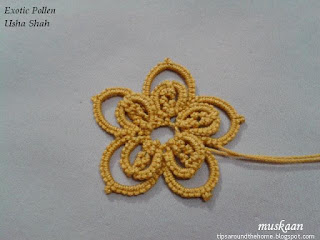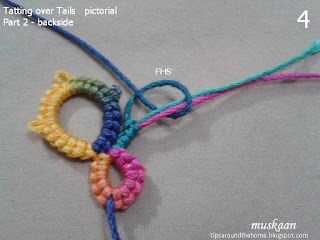This ‘hack’ hit me earlier in the month, while diagramming some vintage
edgings. I was thrilled & eager to share, TILL I began writing this post
& went over to Robin’s blog for her tutorial link. She’s already covered it
meticulously in her last 2 tutorials – I’d totally forgotten (yeah yeah my
encroaching greyness …quit teasing me already!)
But I’m still so excited about this shortcut because it
led to instant designing – literally within minutes! Relatively simple and skeletal designs
thus far, but such fun playing around ! Want to see how? Read on …
How can any of my Inkscape post Not have a reference to
Robin?! She has shared free diagramming templates to get us started. Earlier, I would pick a specific ring or ring
combo and arrange as required by flipping, rotating, resizing, etc. For
clovers in a snowflake, I’d choose the 3 rings and adjust. This not only required
additional steps, but some possible heartburn when they decided to change shape
on rotation ;-/
(Of course, post-event I know that her Drawing ‘Automatic’ Pattern Repeats tuts eliminate all that heartburn & I’ll be internalizing it
for future).
So, anyway, with just a few hotkeys and her Rosette
template (6 outward facing rings), I created Instant Trefoil & Quatrefoil Patterns ! And
went about tatting the latter, too.
This is just the tip of the creative berg - choose and move around templates & motifs !
click on images to
enlarge
See how easy it is to ungroup and rearrange individual motifs. One does not need an advanced knowledge of diagramming or Inkscape here.
Although clicking on images will enlarge them, here it is in pdf for easy reading and reference.
The top left on p3 is a hexagon from trefoils.
This skeleton is converted into a working tatting pattern diagram - a simple 2-round snowflake - with the inclusion of chains and picots.
In the alternate method shown below with quatrefoils, more steps have been eliminated by working with a set of 3 motifs & flipping it!
I draw my own guide lines using the grid and a bezier. Actually this was to be the 2nd hack I intended to share, because many of us still find using the guide lines and snap commands confusing. But for those who can, use the actual guide lines.
Errr, tatting wasn’t as instant as designing – the first ‘hexagon’ turned into a square (the one with tails)! Just a slight stichcount tweak, and I got a square, pentagon And hexagon all from One skeleton diagram (on the left) !!! The picots & joins were shifted in the pentagon & hexagon on the right. It creates a visibly different look, but the hexagon refuses to lay flat.
Incidentally, all rings throughout have 24ds.
And there's another possible pattern on p4 with quatrefoils and thrown rings, but the quatrefoils are 'inverted' ! I think it can be accomplished in one pass using SCMR with thrown inner rings and split rings along the outer circle.
Now the Quatrefoil Square & Hexagon seem to be pretty basic, although my
searches did not throw up such a medallion. And even the stitchcount – I came
up by myself.
If you have come across an exact replica, please do tell.
I will share this pattern & it's myriad design possibilities next time. These different shapes
seem to have a nice fit to create a larger fabric. Hmmm, a magic
square, too, perhaps :-D No harm aspiring, is there - & I might just have got the sequence!
But first I need to design a triangle to fit within. All help is welcome :-)
In the meantime I'm halfway through a bookmark & next a coaster tatting it in one pass.
Related Posts
tatting or drawing – the name of the game is fun !
enjoy :-)




















































